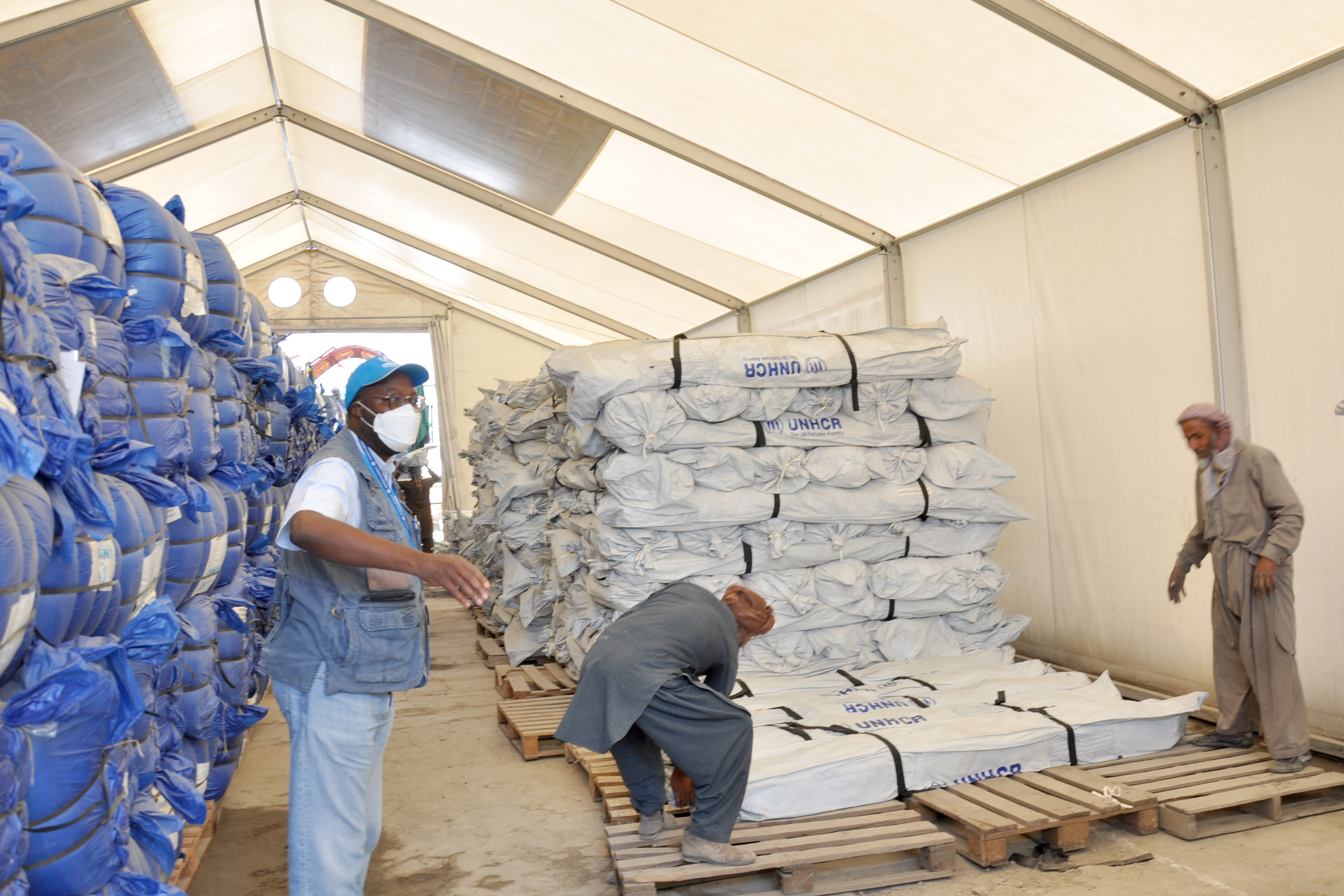Most vulnerable victims from Pakistan's quake zone on road to recovery
Most vulnerable victims from Pakistan's quake zone on road to recovery

MUZAFFARABAD, Pakistan, June 15 (UNHCR) - On a sunny autumn morning, Pakistani housewife Lubna was cleaning up after breakfast - the next minute her life changed for ever. One of her nine children was killed, and Lubna had both legs amputated after she was pinned under a beam when a massive earthquake shook the Kashmir region on October 8 last year.
Nine months on, a heavily pregnant Lubna sees her kids off to school each morning from her bed at the Daharian Sayedan camp, where she and her family have been staying for the past five months. With the help of UNHCR and its partners, the 35-year-old and other vulnerable victims of the natural disaster are recovering from their injuries. But the pain is still there.
"We lost everything. Our home was completely devastated," Lubna says, recalling the huge tremor which killed 73,000 people in the Pakistani and Indian-administered areas of divided Kashmir. She is one of many quake victims classified as "extremely vulnerable individuals" by the UNHCR community services team.
The team, with the assistance of local implementing partners BEST (Basic Education & Employable Skills Training) and the Institute for Development Studies and Practices, routinely identifies vulnerable individuals from camps in the Muzaffarabad area and then arranges for immediate medical attention.
Depending on their need, the patient is either referred to a sister United Nations agency - such as the World Health Organisation or the UN Children's Fund - or to a local, or international, non-governmental organisation that can provide the necessary treatment.
Lubna's will for survival is evident in her eyes, which light up when she is told that she will be diagnosed by an orthopaedic specialist from Helping Hand, an international non-governmental organisation that provides relief and rehabilitation for quake victims. The specialist hopes to design prosthetic limbs for her.
"I have never heard about artificial legs. I am very surprised to hear that they exist, but this may mean that I will be able to walk again, insh'Allah (God willing)", Lubna says, wiping away tears.
"We can't promise you that you will be able to walk like before, but your condition will improve. What we can promise is that you're going to see a lot of us from now on," UNHCR community services officer Catherine Harding tells her.
Meanwhile, at the Helping Hand clinic, 17-year-old Farah is receiving treatment from physiotherapist Dr. Hazart Islam for a broken leg suffered during the earthquake. Doctors were able to save her limb - fractured in three places - but for many months she feared she would be permanently crippled. "I thought I would never walk again," says Farah. "When I was first injured, I could not move at all. Now I can at least stand and walk with some help."
More good news is on the horizon. Dr. Islam explains that with daily therapy and stretching exercises, the teenager is expected to make a full recovery. Since the earthquake, Farah's family has been living in the Lower Plate camp in central Muzaffarabad. Like so many others, she lost her house but was lucky that none of her family were killed.
Although Farah had two successful operations, her parents could not afford to pay for the physiotherapy needed for her full recovery and so she suffered from stiffness and muscle contraction in her legs. The UNHCR team found the medical student one afternoon lying in her bed, and in pain. They sent her to the International Catholic Migration Commission clinic, which referred the case to Helping Hand.
UNHCR's referral mechanism with its partners enables patients to receive timely and appropriate treatment. Farah's case is one of 37 recently submitted to the International Catholic Migration Commission by UNHCR's community services team.
In another case, UNHCR and its partners referred six-year-old Insha Afsar to Shriners Hospitals for Children in the United States. The girl lost a leg in the quake and she needs prosthetics, physiotherapy and trauma counselling. She and her father are waiting for visas and are expected to leave for Massachussetts in July.

Meanwhile, Helping Hand director lauds the UNHCR for its help. "We are really appreciative of the role UNHCR plays and we are proud to work in partnership with you. The more you come to our clinic and visit our patients, the more you inspire them on their road to recovery," says Yasi Janbaz.
More than 130,000 earthquake survivors have returned home from relief camps since March. Close to 67,000 remain in dozens of camps in the quake zone.
By Kevin Chang in Muzaffarabad, Pakistan








